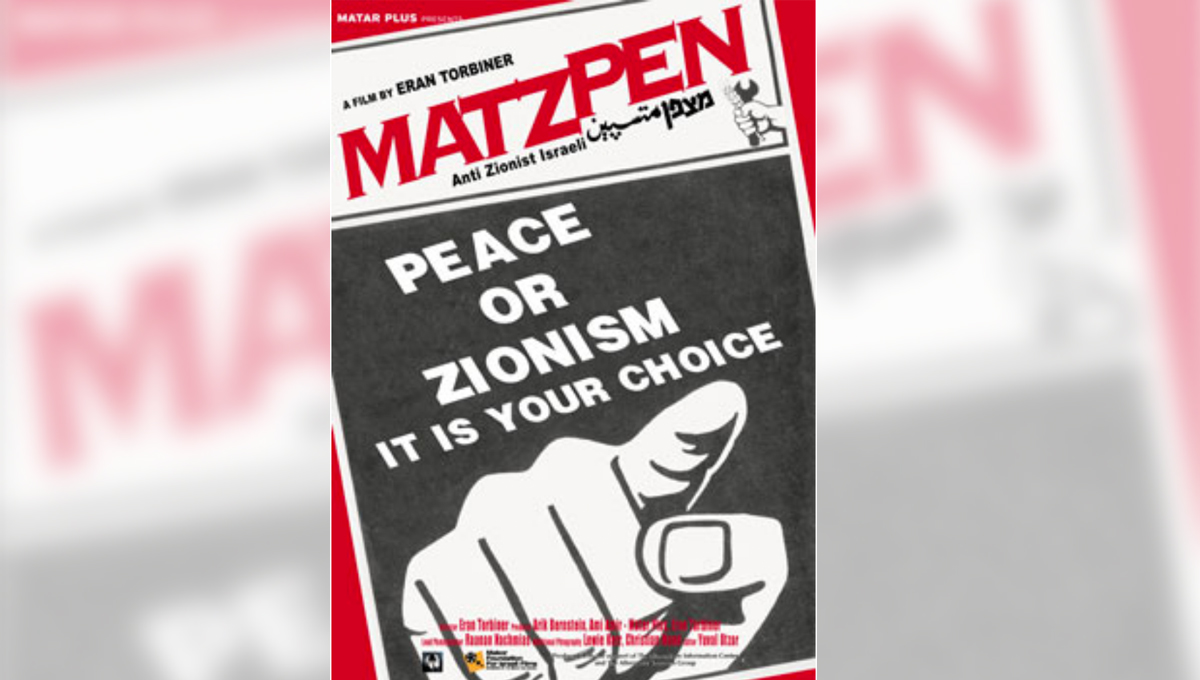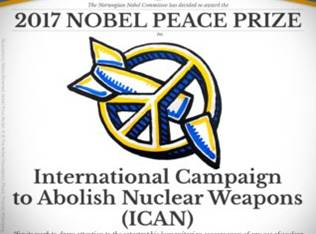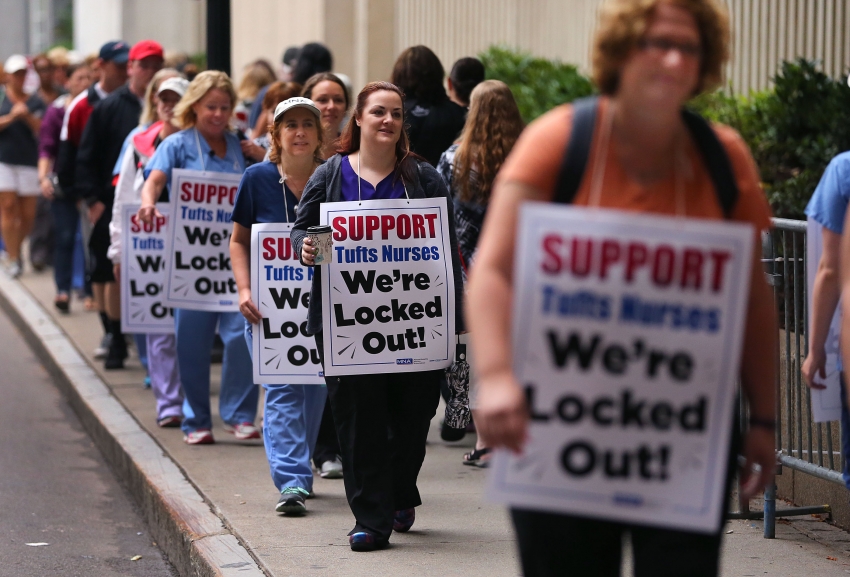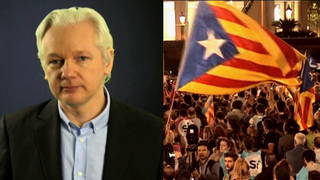Bulletin N° 769
If you would like to be removed from this mailing
list, please indicate so by return mail.
Pour se désinscrire
de cette liste, renvoyez svp ce courriel avec votre demande.
___________________________________________________________________
Subject : Sideshows, Distractions, and Investment
Opportunities in the Age of 'Christian Capitalism'.
14 October 2017
Grenoble, France
Dear Colleagues and Friends of CEIMSA,
State power is awesome when it is exercised in the narrow interests of a small class of people. The class interests of the owners of capital are in the process of rescinding environmental protection laws, medical benefits for the poor, social security benefits for the elderly, guarantees of quality education for the young, reproductive rights for women, civil rights for blacks and other minorities, and rational national defense policies for all Americans, and human rights for people throughout the world. The exclusive focus on private profits has seized the power of the state, which is going to obscene lengths to please a few large owners of capital. The rest of us must suffer, or organize for action . . . . ‘pro-action’ preferably, rather than predictable ‘reaction’, that will better define what we want state power to do to enhance our class interests instead of their private profits.
If revolutionary working class consciousness failed to crystallize in the past 170 years to overthrow the capitalist class domination, we might ask why. Surely it cannot be argued that most workers want to eat poorly; go without medication when sick and die prematurely; live as slaves to meaningless jobs; and be recruited to kill people in foreign lands and perhaps be killed, and to rear their children (if they are allowed to have children) to do the same. What has prevented this revolutionary class consciousness from developing among working-class people could fill a large public library. We must agree that Marx got it wrong back in 1848, that workers were unable to strike off their chains. But what Marx did understand, and expressed in the Communist Manifesto, was that the bourgeoisie creates a world after its own image, upon pain of extinction. And this, unfortunately, continues to be the case, today. The dominant ideas in society, at any given time, are nothing more than the ideas of the ruling class.
The 19th century Russian anarchist, Michael Bakunin, warned of the danger presented by state monopolies of force :
There is no horror, no cruelty; sacrilege, or perjury, no imposture, no infamous transaction; no cynical robbery,
no bold plunder or shabby betrayal that has not been or is not daily being perpetrated by the representatives of
the states, under no other pretext than those elastic words, so convenient and yet so terrible: ‘for reasons of state.’
In the 23 items below, we look at the continuing spiral of events which seems to be sweeping society into a vortex descending inescapably towards annihilation, as crony capitalists blithley continue to do what they do best, namely take advantage of every opportunity to accumulate more capital, at the cost of society. Just how much these man-made crises are a political ploy to promote class collaboration to assure future economic plunder is really a moot question. Dialectical materialism reveals the extremes to which capitalists are willing to go in search of maximum profits on their investments. The collateral damages are irrelevant to this class as long as they hold the reins to state power . . . .
Sincerely,
Francis Feeley
Professor emeritus of American Studies
University Grenoble-Alpes
Director of Research
University of Paris-Nanterre
Center for the Advanced Study of American Institutions and Social Movements
The University of California-San Diego
http://www.ceimsa.org
a.
Iran or North Korea?
http://www.informationclearinghouse.info/48010.htm
by Abdel Bari Atwan
If Trump is truly intent on war, he can be expected go for the ‘easier’ option first
Everyone in the Middle East is busy buying weapons. Barely a week goes by without some big new arms deal being announced. Last week, Saudi Arabia agreed to buy ultra-sophisticated S-400 air defence missiles from Russia, a fortnight after Turkey purchased the same systems. The US responded by offering to supply Riyadh with its own Thad missiles.
What is happening exactly? What are the US and its allies cooking up in the region? Why this rush to arm? And why now, when the jihadi groups that are supposed to be the targets of everyone’s wars in the region, such as Islamic State and the Nusra Front in Iraq and Syria, are on the verge of being defeated? Are the people of this part of the world to be denied in perpetuity any chance to breathe for a few weeks or months, and be spared the tribulations of war and bloodshed and of being financially, economically and psychologically drained? It is war. We have no other answer. US President Donald Trump gave us the glad tidings at the weekend when hosting a dinner for senior military officers and their spouses at the White House. This was the ‘calm before the storm’, he proclaimed. He said he had discussed military options against both Iran and North Korea with his commanders, and we would all soon find out what he was planning to do.
===========
b.
Five Reasons Why Trump Is Moving Towards War With Iran
http://www.informationclearinghouse.info/48007.htm
by Trita Parsi
Trump’s confrontation with Iran is a war of choice, not a war of necessity.
Make no mistake: We do not have a crisis over the Iran nuclear deal. It is working and everyone from Secretary Mattis and Tillerson to the US and Israeli intelligence services to the International Atomic Energy Agency agree: Iran is adhering to the deal. But Trump is about to take a working deal and turn it into a crisis ― an international crisis that very likely can lead to war. While the decertification of the Iran deal that Trump is scheduled to announce on Friday in and of itself doesn’t collapse the deal, it does trigger a process that increases the risk of war in the following five ways.
===========
c.
UK Labour
Party Expels Jewish Anti-Zionist for 'Anti-Semitism'

http://therealnews.com/t2/story:20173:Labour-Expels-Jewish-Anti-Zionist-for-%27Anti-Semitism%27
Moche Machover, an Israeli-born mathematician, philosopher and
radical activist, received an expulsion letter from the Labour
Party for his article, 'Anti-Zionism Does Not Equal Anti-Semitism'; and he
explains the significance of this move in the context of intensifying labor
struggles.
===========
d.
An Al Jazeera
Reporter Went Undercover with the Pro-Israel Lobby In
Washington
http://www.informationclearinghouse.info/47985.htm
by Aída Chávez, Ryan Grim
Britain’s broadcasting regulator on Monday concluded
that Al Jazeera did not violate any rules in its
controversial undercover investigation exposing the Israeli embassy’s campaign to
target British citizens critical of Israel, a campaign that included
attempts to destroy the careers of pro-Palestinian British politicians. The
move by the communications regulator, known as Ofcom,
clears the way for a follow-up documentary focused on Israeli influence in the
United States, the existence of which has previously been
suspected but had yet to be made public. Clayton Swisher,
director of investigative journalism for the Al Jazeera
Media Network, confirmed it on Monday to The Intercept. The goal of the British complaint
may partly have been to delay publication of the follow-up American version, he
said. “At the very same time [as the London investigation]–and we can
safely reveal this now–we had an undercover operative working in tandem in
Washington, DC. With this UK verdict and vindication past us, we can soon
reveal how the Israel lobby in America works through the eyes of an undercover
reporter,” he said.
The four-part series “The
Lobby” dug
into the Israeli embassy in London, as well as several other pro-Israel lobby
groups, and their campaign to “take down” British Foreign Office Minister Sir
Alan Duncan.
===========
e.
Abby Martin Responds to Attacks From Pro-Israel Organizations

http://www.informationclearinghouse.info/47969.htm
teleSUR
journalist Abby Martin recently became the target of a smear campaign by
Israeli organizations after an appearance on the podcast The Joe Rogan
Experience. On the program, which is one of the biggest and most popular
podcasts in the United States, host Joe Rogan has a discussion with Martin
about her experiences in Palestine while
she was there for her show The Empire Files in 2016. Video of Martin’s
appearance on The Joe Rogan Experience—where she recounted her eyewitness
account of human rights violations—went viral on social media. The interview
garnered over 1.5 Million views on Facebook alone.
===========
f.
The Occupied
Territories Are the Biggest Prison on Earth

http://www.truth-out.org/opinion/item/42190-the-occupied-territories-are-the-biggest-prison-on-earth
===========
g.
The Palestinians’ Right and Duty to Resist

http://www.informationclearinghouse.info/47967.htm
===========
h.
Why American
Evangelicals are a huge base of support for Israel
https://www.pri.org/stories/2016-10-24/why-american-evangelicals-are-huge-base-support-israel
by Christopher Connelly
===========
i.
The Occupation of the
American Mind
http://www.informationclearinghouse.info/47823.htm
Video Documentary
(55 minutes)
Directed by Sut Jhally, Professor of Communication at the University of
Massachusetts and founder and Executive Director of the Media Education
Foundation, with Pink Floyd’s legendary musician, Roger Waters,
this film exposes Israeli contempt for public opinion and the Israeli public
relations campaign to influence the U.S. media.
"This is a film that demands to be
seen. It shows, with devastating precision, how effective propaganda can hide
crimes that are epic in scale and have catastrophic consequences. Please see
this film, hire it, screen it, talk about it." - Ken Loach,
===========
j.
'God Has
Given Trump authority to take out Kim Jong-un,'
President's
Evangelical Adviser Says

http://www.informationclearinghouse.info/47974.htm
by Sarah Pulliam Bailey
Texas pastor Robert Jeffress makes claim as tensions escalate between Pyongyang
and Washington
===========
k.
Top
Ten Horrible Things done to Us by Outgoing Sen. Joe Lieberman
===========
l.
First six
months of Trump Presidency is a horror story
https://www.youtube.com/watch?v=9Dv87kandX0
with Noam Chomsky
===========
m.
Kremlin
Issues Stern Warning to Washington Over Its Help for
Terrorists
in Syria
http://www.informationclearinghouse.info/47984.htm
by Gilbert Doctorow
From time to
time, the Kremlin uses the Sunday evening weekly news wrap-up program of Dmitry
Kiselyov on state television channel Rossiya-1 to
send blunt and public warnings to Washington without diplomatic niceties.
Last night
was one such case and we must hope that the intended audience within the Beltway
can put aside its focus on Russia Today’s supposed fake news long enough to
read a real message from Moscow.
The last such
message came in the week following the April 8th Tomahawk
attack on a Syrian air base that Donald Trump sprung on the world, allegedly to
punish the regime of Assad for a chemical attack on a village in Idlib province.
Kiselyov used his airtime then to spell out the Russian response, which he
characterized as unprecedented in scope and seriousness. It was essential to
put all of its elements together in one place, as he did, because our boys in
the Pentagon chose to downplay one or another element in isolation, such as the
Russian installation of their Iskander nuclear
potential missiles in Kaliningrad, or the abrogation of the deconfliction
agreement relating to air space over Syria, or the dispatch of still more
Russian vessels to the Eastern Mediterranean equipped to sink our Navy.
While our
generals were saying that the Russians didn’t really mean it, Kiselyov put the whole picture on the screen: an
ultimatum to Washington to back off or be prepared for war.
===========
n.
How the Military-Industrial Complex ‘Preys’ on the
Troops
https://www.commondreams.org/views/2017/10/10/how-military-industrial-complex-preys-troops
How taxpayers are really just supporting the CEOs of arms
manufacturers and Defense Department contractors.
"The
real question is: How much of this money actually promotes the defense of the
country and how much is essentially a subsidy to weapons makers and other
corporations more focused on their bottom lines than giving the taxpayers value
for their money?"
===========
o.
Here’s How Much of Your
Taxes Have Gone To Wars
http://www.informationclearinghouse.info/47911.htm
by
Marcus Weisgerber
Previously
unreported Pentagon data shows how much the average U.S. taxpayer has paid for
combat operations in Afghanistan, Iraq, and now Syria.
===========
p.
Economic Update: Economics,
Psychology and Mass Murders
https://www.youtube.com/watch?v=6T1Ezuy-LmM
with Richard Wolff
===========
q.
Michael Hudson on Junk Economics update 2017
https://www.youtube.com/watch?v=653DWJmfTK8
with Michael
Hudson
===========
r.
Scrapping the Clean
Power Plan Won't Bring Back Coal

http://therealnews.com/t2/story:20186:Scrapping-the-Clean-Power-Plan-Won%27t-Bring-Back-Coal
EPA chief Scott Pruitt declared 'the war on coal
is over,' but the loss of coal jobs had nothing to do with the Clean Power
Plan, and repealing it is simply a 'shameful giveaway to profit-driven
polluters,' says Food & Water Watch's Winona Hauter
===========
s.
From: "Jean-Paul
Vienne"
Sent: Wednesday, 11 October,
2017
Subject: « ICAN », c'est
nous, ICAN, c'est vous tous
https://www.mvtpaix.org/wordpress/38isere/isere6/
Chers/chères
ami(e)s de la paix de l'Isère (et des environs),


Les
militants de la paix ne cherchent pas nécessairement la gloire. Il ne font, pour autant, pas fi de la reconnaissance
publique, bien utile à promotion de la cause qu'ils ambitionnent de défendre.
L'attribution toute récente du Prix Nobel de la Paix à ICAN (International Campaign to Abolish Nuclear Weapons) leur procure une
satisfaction, oui une fierté qu'ils n'entendent pas dissimuler.
ICAN
fut fondé il y a une dizaine d'années à l'instigation d'un groupe international
d'associations pacifistes résolues à mettre un terme aux armes nucléaires, dont
notre Mouvement de la Paix, qui en est toujours l'un des moteurs les plus
actifs. Notre ancienne coprésidente Arielle DENIS n'est-elle pas désormais l'un
des responsables les plus en vue d'ICAN? En vérité, ce Prix Nobel de la Paix
2017 est donc aussi le nôtre, il faut le savoir. Il nous remplit de fierté,
nous encourage, nous oblige aussi. Il ne nous reste plus qu'à rester à la
hauteur de cette haute distinction.
L'attribution
du Prix Nobel de la Paix à ICAN est notamment, pour les membres de l'Académie
Nobel de Stockholm, le moyen le plus éclatant de s'engager clairement aux côtés
de ceux qui ont toujours lutté avec ardeur et constance contre l'existence même
des armes nucléaires, mortelles pour l'avenir de l'humanité elle-même. Elle
est, surtout, le moyen le plus évident d'appuyer l'adoption à l'ONU, le 7
juillet dernier, du Traité d'Abolition des Armes Nucléaires par une
majorité d'Etats (122 sur 193) , qui rend, du coup,
parfaitement illégales la fabrication et la détention de toute espèce de bombes
atomiques, les françaises comme les autres... Qui mieux que nous s'est engagé à
faire connaître la teneur de ce traité qui marque une étape décisive dans la
lutte contre cette arme fatale?
On
rappellera également que le Mouvement de la Paix est en outre membre
du Bureau International de la Paix (lui aussi sis à Genève), fondé en 1891 à
l'instigation de Bertha von Suttner (1843- 1914), lui aussi distingué par le
Prix Nobel de la Paix en 1910. Nous sommes donc, par là-même, désormais membres
de deux associations internationales, toutes deux honorées par le Prix Nobel de
la Paix. Que de fierté. Mais aussi que de responsabilité devant l'histoire et
l'humanité!
Mais
notre force n'est que celle de l'ensemble de nos militants et de ceux qui les
soutiennent. Si nous voulons peser sur les décisions des Etats, le nôtre et les
autres, un Prix Nobel ne suffira pas. Il faudra surtout nous renforcer, jusqu'à
devenir un pouvoir citoyen qui compte, à même d'infléchir dans le bon sens le
cours de l'histoire. On a besoin de toutes les énergies...
A
bientôt pour de nouvelles initiatives.
Amicalement
à tous,
Jean-Paul
VIENNE
pour le Comité de l'Isère du Mouvement de la Paix
===========
t.
From: mkroopkin
Sent: Thursday, 12 October,
Subject: A Conversation on "What the Revival of Socialism in
America Means for the Labor Movement"
Dear UCSD alumni of the Che Guevara collective,
One example of possible
content is inter-tendency dialog on 'cutting edge' issues. This inquiry (below)
went out earlier to a wide range of organizations on 'the left':
"What is your
perspective(s) on the issues discussed in this article? If you reply, please
state whether or not you give permission for your remarks to be published (as
an extension of the article's conversation), at New Indicator http://newindicator.org/
"Don't Mourn,
Organize!
"Monty
Kroopkin"
Please note: forwarded message attached
Date: Mon, 9 Oct 2017 05:51:37 -0700
To: dualcard@lists.iww.org
Subject: [Dualcard] What the Revival of Socialism in
America Means for the
Labor Movement
http://inthesetimes.com/working/entry/20587/labor-movement-workers-socialism-united-states/
What
the Revival of Socialism in America Means for the Labor Movement

Monday, Oct 9, 2017, 7:25 am
by Shaun Richman and Bill Fletcher, Jr.
Tufts Medical
Center nurses picketed after being locked out of their jobs at the hospital in
Boston following a 24-hour strike on Jul. 13, 2017. (Photo by John Tlumacki/The Boston Globe via
Getty Images)
Bill Fletcher, Jr. and Shaun Richman are contributing writers to In These Times, as well as
veterans of the labor and socialist movements. Both have worked for several
labor unions, with Fletcher having served as a senior staffer in the national
AFL-CIO and Richman as a former organizing director for the American Federation
of Teachers. Both came of age during different eras of left politics. In this
conversation, the two writers and organizers examine what a revived socialist
movement could mean for unions—and the broader push for workers’ rights and dignity.
Shaun Richman: We’re in a political moment
when tens of thousands of Americans are declaring themselves to be socialists
and joining and paying dues to socialist organizations. It’s not just Democratic Socialists of America (DSA),
although DSA is growing the largest and the fastest. The entire alphabet soup
of the Left, basically any socialist group that isn’t a weirdo cult, is
experiencing an influx of new members and activity. In the context of the
“Organize or Die!” union push of the last 30 years, this is new and potentially
a game-changer. There are now organized socialist groups that exist in
significant numbers and are trying to figure out what their labor program
should be, how they relate to a labor movement, and how they can be helpful.
And it’s not obvious what they should do. Bill, what are the opportunities and
pitfalls, and what does this growth mean for labor?
Bill Fletcher: It
is useful to contrast this growth with what took place in the Left during the
late 1960s and early 1970s. The Left, at that point, saw a project that was
necessary within the working class. And so there was a whole wave of people,
myself included, that went into workplaces, if we weren’t already there, as a
way of organizing to rebuild a vibrant labor movement and to lay the foundation
for a working-class-based radical political movement that would, hopefully,
result in the construction of a new political party of the socialist Left.
That’s different from what I’m seeing right now, which is the growth in interest
in socialism, broadly defined, among a large number of people, particularly
younger people. That is fantastic! But it is far from clear that
they are wedded to a class project, except in a very abstract sense. And that
difference is fundamental. It’s not just an ideological question; it is also a
strategic question. Where and how does a reborn
socialist movement build a base?
One of the tendencies that we began to see in the late 1980s and early 1990s
was an orientation among many younger leftists that assumed that the work they
did organizing the working class had to be done via staff positions: staff for
unions and staff for workers centers. So the workplace-based organizing became
less and less of a priority and activity. We need to unpack this a bit.
Shaun: One
challenge of organizing workers currently is that most people out there—even
union members—don’t really understand what a union is. They understand them as
some sort of abstraction. The way some budding left critics of unions talk, it’s like, “Well why won’t ‘the unions’ break with the
Democratic party?” Or, “Why are they so loyal to the companies they represent?”
This reflects a lack of understanding of how heavily regulated unions are and
the structural trap that unions find themselves in.
Another problem is
the one you note. I’ve been doing a lot of recruiting of new union organizers
in the last decade. There are these moments that flare up when you see
tremendous interest from new activists: maybe it’s Wisconsin, maybe it’s the Chicago
teachers’ strike. There was definitely a big influx of new organizers coming
out of the 2008 Obama campaign. People had that lightbulb
moment when they wanted to get more involved in social justice, and they
decided to go straight for a staff job at a union.
Almost no one paused to ask how to stand in place and fight for a union
at the job they were in. And one of the pitfalls of the staff model is,
obviously, there just aren’t that many staff jobs, and they’re dwindling. The
opportunity of an organized socialist movement is that it provides a different
way to get involved and to do something at your workplace, or find a new
workplace where you have comrades and you can maybe start pushing in the right
direction and laying the seeds for labor’s next uprising.
Bill: Left politics need to unite with workers—and the lives and
activities of workers. And there are different ways that that’s going to
happen. One aspect of that work is the building of unions.
But even when it comes to building unions—if you think back on the work that
the Left did in the 1930s, whether it was the communists, the Trotskyists or whatever—the process of building those
unions was a major priority of the Left. And cadres were made available to help
to build unions. In addition, building a presence of the Left in the working
class goes beyond the workplace and includes communities. That’s what today’s
socialist left really needs to be thinking about.
Shaun: I prefer to look at the 1920s. First of all, from a power
perspective, they seem very analogous to our era. But there’s also an element
of optimism: If this is our era is the 1920s, what can we do to get to our
1934?
There were really interesting projects during the 1920s socialist Left that
helped change the environment and made the 1930’s uprising possible. One is the
Trade Union Education League (TUEL). They developed a smart way of addressing
the problems of union structure—how the craft model sometimes got in the way of
solidarity. They also got past that earlier Wobbly thrust of just
quitting the AFL to create new “perfect” organizations that would compete
against and “defeat” the craft unions.
“Amalgamation” was the watchword, and the principle was that we can put
structural rigidity aside while we figure out a model where every union that
claims jurisdiction gets those members, as long as all members are fighting
within the same collective bargaining framework. But the important thing is to
go into the unions where the workers are, instead of being the perfect union
hanging off to the side. “Go where the workers are,” seems to be a pretty good
and long-standing rule of socialist organizing.
They still wound up getting accused of being “dual unionists” by existing
leadership, which felt threatened by these folks who were organizing as
caucuses. Many were expelled from those unions. The peril of that sort of
model— which modern-day socialists fall into a bit too easily– is succumbing
to knee jerk oppositionalism. Without a
real analysis of the structural, legal and organizing challenges to unions, you
fall into the mindset of, “If only this person was in charge instead of that
person,” or, “If only these people weren’t the ones on staff but these other
people were.” Then you’re just “the opposition.”
First of all, we’ve got at least 30 years of experience here, where just
replacing folks at the top, or just replacing the staff with more “dedicated”
people, is clearly not the breakthrough strategy. But more strategically, if
DSA or if any of these groups are able to be painted as knee-jerk opposition
caucus joiners, you could very quickly find yourself blacklisted or
marginalized, and that would be a waste of this opportunity. Which is not to
say don’t ever engage in opposition (if you can win). But, it’s telling how
much people point to the Chicago Teachers Union (CTU), because it’s the
best example of where new leadership was needed. That new leadership organized
the membership in a real and meaningful way and has improved the state of the
union. But the fact that that’s the example everyone talks about should tell
you that it’s the exception that proves the rule.
Bill: There’s an assumption implicit in what you were saying that I
would challenge. Based on my own experience, I can tell you that one does
not have to be in direct opposition in order for the traditionalists or the
pragmatists in the leadership of organized labor to red-bait or otherwise
marginalize you. We have had segments of the Left that decided to tail
the union leadership in order to—in their own view—build alliances. In other
cases, they may have hoped that, through building such a relationship, they
would increase the opportunity to be in a position of influence and power.
On the one hand, you have the opposition caucuses. As you note, they can be
very sectarian and unproductive. Although in cases like Teamsters for a Democratic Union (TDU)
and the reform movement that took
over the CTU, they can be really important. The challenge for leftists is that
even in the absence of a reform caucus, to the extent that you’re trying to
push the envelope, even when you have absolute displays of loyalty, you still
can be perceived as a threat. So people should not think,
“Well I’m not going to be a sectarian ass, and therefore people will listen to
me, I’ll be able to serve a productive role.” I wish it worked that
easily.
I have argued for a long time that people on the Left can’t treat the labor
movement as a panacea nor as some sort of hideous creature. It’s complicated.
It is also a strong argument for why we need Left organizations rather than
leftists relying only upon themselves as individuals.
Shaun: Working for unions as staff is not for everybody
and shouldn’t be the default position. If you can do it, the pay and benefits
will be good, you'll learn some stuff, but you also might hit a limit of what
you can learn. The role of movement is to help you to figure out where the next
smart place to go is.
Back to the TUEL, one thing they did is that they didn’t just focus on
where unions already existed, which—like today—was in only a handful of
industries that they were able to hold onto. It was clear there were growth
industries where workers had to be organized, but there weren’t any unions that
were seriously trying to organize—the auto factories being the best example. So
TUEL activists took jobs in those auto factories and focused on just getting
the job, making friends, becoming trusted co-workers and showing shop floor
leadership. All the while, they were puzzling out with each other what serious
union organizing would look like in mass production factories. And they wound
up being a very crucial base of cadre when the UAW came along in the 1930’s.
So one of the exciting things about there being organized
socialist groups is the idea of salting. When I was running the AFT’s
charter schools organizing program, I probably had a different take on
this. Back then, I needed folks who were ideologically committed and willing to
go work at a non-union charter school and help us organize it. An inside
organizer makes a massive difference.
My wife salted a charter school, and she managed to organize the place in
three weeks. But now that I’m not currently running any union organizing
division, what I see more is that the members of these socialist organizations
already have jobs in the industries that we know we need to organize but nobody
currently knows how.
I’m sure there are a ton of IT workers and freelancers who are now
card-carrying socialists. I think salting looks more like tapping into
socialist membership networks on the job. Find each other, and get a book club
together, start reading together, start meeting together, and start thinking
what would workplace action look like. Don’t model this
on what the current unions look like, because however we’re going to
organize IT, it’s never going to look like the UAW. The industry is just vastly
more complicated by design.
Bill: The same model was implemented in various forms and on a
different scale in the 1970s, but the Left as a whole was smaller then. Let’s
dissect this word “salting” a little bit further. There’s salting that refers
to sending people into workplaces in order to lay the foundation for new
organizing of a union, and then there’s salting in the sense of
in-shop organizing that aims at playing a transformative role within existing
unions.
When I went to work at a shipyard in the 1970s, there was already a union, but
it was a very conservative union. With other people on the Left, we built a
reform movement that aimed to change the power situation within that local. We
need people who are prepared to go into workplaces where there’s already
organization. But we also need people who are going to be going into new
places.
Here’s where it gets more complicated. Much of what needs to be organized is
very low-paid work. The entry-level rate at the shipyard was low, but it was
still something that I could live on. Many people shy away from salting
precisely because of this. It’s not an obstacle, but it is a challenge.
Shaun: Much of this depends on who is willing and able. If you’re a footloose
college senior who has that freedom and isn’t tied down by a family or a
mortgage, who can take a front-desk job at a non-union hotel, that’s a special
kind of help you can provide. But given just how much of the economy is
currently unorganized, I think a lot of people are already in jobs that need to
be organized. Again, I’m sure that there are tons of card-carrying socialists
who work in IT. They shouldn’t leave that job. They should stay and fight, and
they can contribute tremendously by finding each other and by thinking about
what are the actions, the concerted activity, that we
could take together that can demonstrate some power and inspire more coworkers
to join.
I became a teenage socialist in the 1990s. I only heard about that 1970s push
to “go into industry” as a cautionary tale. What I heard was the Socialist Workers Party told
all their members who had built careers as academics or as writers to go into
industry—basically upend your professional life. It kind of tore the party
apart and left it as a tiny sect after
what had been a fairly rich history of movement building.
And, yes, sacrifices will have to be made, but I do think that we have an
opportunity just because of how disorganized the economy currently is. Many
people are already in a job that needs to be organized, and just by talking,
reading, thinking and planning small actions with comrades, they move the
needle.
Bill: The role of organization becomes very important
here—specifically, the type of organization. One of the things about the Communist Party in the 1920s
and 1930s was that they had an analysis of strategic sectors of the
economy—mining, steel and auto—that needed to be organized.
One of the central
tasks of organized socialists, as opposed to individuals, is to really examine
the economy and think about where we need to be, including organizing the
unemployed and informal sector. Not just organizing unions, but how do you
build a left presence in these sectors? Do we have to do it in a different way?
Is this one of the reasons or one of the ways that we need to be thinking about
workers centers, for example, or other organizational vehicles, as ways of
penetrating sections of the workplace that we haven’t been otherwise able to
penetrate?
Shaun: That takes us to one of the other left projects of the 1920s
that we need a 21st century model for: the labor colleges that sprang
up. I'm thinking of places like Brookwood Labor
College in upstate New York, Work People's College in the Midwest and
Commonwealth College down south. The model of the schools was, first of
all, everyone was in the room: people from different industries, different
unions, or non-union workers, people with different educational attainments.
The point was to step back from the daily work and to evaluate—with no sacred
cows—the law, the union structure and the industries.
Our current labor colleges are great. I’m a big fan of the University of
Massachusetts Union Leadership and Activism (ULA)
program for doing some of this, but it’s a masters
program so it’s sort of inherently elitist. We need PhDs in the room with high
school dropouts as equals, electricians in the room with non-union IT
workers, teachers in the room as students. It shouldn’t be tied to college
credits, although if you can find a way to incorporate that, that’s always
helpful.
The way labor education is funded now makes it hard to not have sacred cows.
The 1920s labor college leaders, like A.J. Muste and Kate Richards O’Hare, really drove
a process of never simply accepting “it is what it is” as an answer to
anything. They were crucial for getting past the abstraction of craft union
structure versus pure industrial union, and coming up with newer models of
worker representation and protest. They examined critical questions: How do we
not let our picket lines get smashed? What if we locked ourselves in instead of
letting ourselves get locked out?
As you noted, these conversations can be threatening to union leadership, but
it’s not like someone made a mistake. It’s not like William Green and John L
Lewis and Sidney Hillman all sat down at a table and took a vote on the best
framework for collective bargaining. The combination of exclusive
representation, the duty of fair representation, agency fee, and enterprise-level
bargaining is the product of a series of historical accidents. We need to
understand how this came about by accident, how this system worked, when and
why it worked, and start to develop ideas about how to replace it.
Increasingly, it’s not working for us. Certainly it’s not working for
the non-union segment of the economy, which is most of it now.
Bill: The AFL-CIO went through a process of building a National Labor College (NLC), when
John Sweeney took over as president of the AFL-CIO in 1995. It was a
controversial decision, because there were many labor academics and
labor studies programs that felt threatened by the idea of what the NLC might
mean for their respective programs. It was very unfortunate. That eventually
calmed down.
There was the question of whether education was mainly going to be found at
brick-and-mortar institutions that labor unions set up, like the NLC or the
United Auto Workers’ iconic site at Black Lake Michigan. Alternatively, there
was the question of whether the education offered by unions would be through
programs and initiatives that were getting out into the field and developing
programs where the members were. Another question was whether it should be a BA
and Masters, versus developing our own West Point where we would be training
the upcoming ‘generals’ and ‘colonels’ of the movement. That discussion never
came to fruition.
Through cost overruns and several other problems—including the split in the
AFL-CIO, which led some unions that had split off to stop using the Labor
College (apparently because they wanted it to collapse)—the Labor College found
itself in a crisis.
But there was also a lack of consensus at the leadership level as to what
priority it should be and whether it was worth the expense. Leaders of
affiliated unions, by and large, went along with Sweeney’s proposal, but I’m
not even sure that Trumka was all that enthusiastic
about it. This lack of consensus, I have concluded, was the ultimate
demise of the NLC.
All of the educational efforts that you’re pointing to during the early part of
the 20th century—and to which I would add the Highlander Center—were central in
terms of offering advanced education for labor intellectuals. I use that term
very broadly and do not mean just labor academics. These institutions helped to
train and shape the thinking of people who would play major leadership roles in
the new labor movement. At this point we need to look at the form and
content that worker-centered, movement-building education should possess.
Shaun: Certainly, in the year 2017 it’s folly to try to run labor
education out of the unions. They’re facing an existential threat from Janus.
Nobody has an appetite to fund it. So it has to be independent. Is it done at
the universities—at UMass, Murphy, Rutgers and the rest? Yes, obviously, and
all of those institutions are doing good work. Some are finding ways to grow in
this moment and to bring in new revenue to do interesting programs. But there
is still a need to build an institution of labor education that is independent
and not based on a traditional tuition and credit model. Book clubs, like
the Jacobin reading groups, seem
like a really smart thing to do right now. All you have to do is find a library
reading room, or somebody’s living room, and buy or borrow the books. So it’s
fairly low investment to get started.
But those have to start getting connected to each other, so that the
conversation that’s happening in the Bronx gets connected to the conversation
that’s happening in Chicago and in Raleigh-Durham. But if you have maybe
100,000 card-carrying socialists putting money into a pot, you start to be able
to develop something that possibly looks like the Socialist Party’s Rand School, to go even further
back in time.
Back to the 1920s, the third interesting project to me that cries out for
a 21st century analogue is the International Labor Defense organization
that was led by by James P. Cannon. Back then, union
leaders would get jailed on trumped-up charges of conspiracy, like inciting
riots on picket lines. The infrastructure to raise money for bail and defense
lawyers was a literal life saver. We’re not yet facing those kinds of
fights, thankfully, but folks lose their jobs in organizing all the time. And
there’s a lot of money that needs to be raised. The interesting question is
what does an International Labor Defense look like in the GoFundMe
era? The Silicon Valley capitalists have created the technological
infrastructure that we can either use or steal.
I’ve put out this report, Labor’s Bill of Rights, which
argues that we should be using more constitutional challenges to the laws that
really restrict workers’ activities, which will involve breaking the law. Look
at the Jimmy Johns workers in the Twin Cities area who got fired for hand-billing
about the fact that they could not take a sick day unless they found
a coworker to replace them. The company’s rule was
come into work sick if you can’t find someone to fill in for your shift.
They put out leaflets making common cause with the customers. I would want to
know if the people making my sandwich were possibly contagious. The activists
got fired, and now we have a Circuit Court decision that says that they deserved
to be fired because they were being disloyal to their employer.
There is a major black hole in free speech law around workers. We’re
going to need more fights like this, and I would point out that was an Industrial Workers of the World organizing
effort, which suggests the value of outsider activist strategies and relatively
small organizations that think differently and are nimble. But you can’t ask somebody
to take a risk like that unless you can offer them some sort of support, and
again that’s where fundraising for workers’ defense as a socialist project
would be huge. Folks are already doing this, but there’s an opportunity to do
it in a more organized manner, tap into social media and make it more visible.
Bill: There are actually two issues here. There’s the question of
organizing legal defense and the broader matter of strategy in the
workplace around authoritarianism. It’s conceivable that a 21st
century version of International Labor Defense could be constituted. There
are organizations that take on some cases, particularly around union democracy
issues, like the Association for Union Democracy. The problem is that you will
quickly encounter “donor fatigue.” This is something that we see particularly
in responses to disasters. People can be affected in the beginning, and then
after a while they start getting tired. And so you have to be very
careful about how you move such efforts. One should not assume that each and
every injustice will result in a mass campaign. It’s going to have to be very
strategic. And that will mean that some people will get help, and other people
won’t.
But the deeper strategic and programmatic issue is something that I think that
organized labor and much of the left have largely abandoned. That is what
Barbara Ehrenreich talked about back in 2000 and what
Rand Wilson have been raising since the
1980s: the authoritarian nature of the non-union workplace. The fact is that
workers give up their rights when they’re walking into non-union workplaces. I
am convinced that taking on that struggle would be electrifying for several
reasons. One is the idea of being protected against wrongful termination means
more than the current situation in the United States, where if one gets fired
in a non-union workplace, one has few options other than trying to get
unemployment compensation.
“Just cause” dismissal means developing institutions, such as labor courts, as
you have in much of the rest of the world. Now at the level of strategy, it’s
seemed to me for a long time that this is something that should be pursued,
particularly in so-called “right to work” states. We should be advocates of
rights at work and use that to flip the script.
Shaun: I agree, and we’re in a moment when these notions are
bubbling up—at elite levels, at least. First of all, for any socialist book
clubs that are starting out there, I would highly recommend Elizabeth
Anderson’s new book Private Government. . It makes a
really clear and fairly deep argument about why we don’t even see how we give
up our rights when we walk through the boss’ door and why that needs to change.
There was a write-up in The New Yorker this
weekend, and she had a piece in Vox: It’s
getting out there. I included Just Cause as one of the ten parts of Labor’s Bill of Rights,, and I’m getting some interesting
feedback about that.
Bill: Like what?
Shaun: I had a conversation with the staff of a
well-respected progressive in Congress, where they expressed interest in doing
something as bold as introducing a Just Cause bill, particularly if it would
spark state-level efforts. I heard that some of the alt-labor groups in
California were thinking about it as a potential ballot initiative after we saw
in November that progressive ballot initiatives win even when right-wing
politicians win. When you put workers’ rights and workers’ pay on the ballot,
workers are going to vote for that.
There are two bits of pushback that I get on this. One is folks say,
people actually assume that they can’t be fired for just about any reason, and
they only find out after they lose the job. I’m not sure that that’s the case.
First of all we’re seeing a lot of Nazis getting fired after they had
their pictures taken at Charlottesville. We see people get fired for things
they say on social media. But there’s still that pushback that workers don’t
understand they don’t have these rights. Well that seems like a
project of popular left education, to make sure workers understand what their
rights are (and aren’t).
The other pushback is a feeling among a lot of union people that if every
worker had job protections, why would workers form unions? And that’s just a
lack of imagination. If every worker in a state had just cause protection, and
there was some sort of recourse to a labor court, or arbitration,
then you have lots of workers who would understand the good sense of paying for
representation. You have right now millions and millions of workers who would
like to join a union tomorrow but can’t, because they need to
convince a majority of their coworkers to vote for it. But if there were just
cause protections, I think there are tons of unions that could go out there and
say, join us and we’ll be there for you.
And then there are all these other things you get by being a part
of the union, including, one would hope, some more popular education around
economics and workers power. So it seems like a potential pathway back not only
to worker power but to union power. And again we’re in a moment when people are
just starting to talk about it. So we should push on it, so yeah it’s time that
we joined Europe on this.
Bill: Exactly.
Not just Europe–other parts of the world. The objection that you heard, I’ve
been hearing since the 1980s, when I first got involved in the issue of
wrongful termination. Trade unionists were saying, why
would people join unions? As if that’s the major obstacle that we face now. I
mean, it’s so absurd, so small-minded, that it almost
doesn’t deserve a response. But I think that your response is a very good one.
Shaun: It
gets back to having a structural critique. We should be looking at what is
keeping us from growing into areas of the economy where we need to be, what is
diminishing union power, and we need to think about breakthroughs. A lot of the
breakthroughs have to come through changing the law, and breaking out of this
model of NLRB-certified, enterprise-level bargaining. I’m not saying get rid of
it, but it can’t be our model for growth. We’re not going to grow back to 33
percent union density through that model—not with card check, not even with repealing Taft-Hartley. We’re just not going to grow
to the high-water mark of union density under a model collective bargaining
centered around atomized workplaces.
We need something
that gets us to have a voice in industry, and in entire sectors, all at
once. And sectoral bargaining—or sectoral
rule-making, even—is another idea I see bubbling up, also at more elite levels,
in think tanks and labor colleges. But it is something that workers and members
of socialist book clubs should be talking about too.
The
pushback is that it’s pie-in-the-sky when we had a triple-crown Democratic
government and couldn’t even get card check passed. But opportunities for
change sometimes come at you faster than you expect. God forbid 20 million
workers sat down at the job tomorrow and created the crisis that would actually
get Congress to change our labor laws. What would we win? Card check, because
that’s the last idea we put on the table? We should be discussing ideas that
are big, that are utopian, that seem hopeless.
Otherwise, when the moment arises to actually make a gain, we’re going to
be caught flat-footed.
Bill: Absolutely.
You know we have to be advancing new and exciting ideas. And one of the ideas
that is important for organizers to
appreciate and certainly for the left to appreciate, is that when people are
actually inspired by visionary notions, they are capable of extraordinary
accomplishments. When there is a lack of inspiration, something different
happens, and that is that people tend to fall back into their everyday lives,
and their everyday problems, and get held down, smothered by them. If we’re
attempting to build a new movement and going on the counter-offensive, we must
ensure some level of inspiration. And that doesn’t mean providing all the
answers, it doesn’t mean detailing the ultimate utopia. It means that we’re
laying out an idea about how change can happen and the difference that it
actually can make.
Shaun: I agree, and that might be a good note to end on. This moment
presents an opportunity to gain some new ambition and
to think a hell of a lot bigger than we’ve been thinking for decades now.
===========
u.
The Future of the
EU at Stake in Catalonia
http://www.informationclearinghouse.info/47983.htm
by Pepe Escobar
A new paradigm has
been coined right inside the lofty European Union: 'In the name of democracy,
refrain from voting, or else'
===========
v.
As Catalonia Plans Independence from Spain, Julian Assange
Advises Organizers on Secure Messaging
https://www.democracynow.org/2017/10/10/as_catalonia_plans_independence_from_spain
===========
w.
Curtain down On Las Vegas Shooting

http://www.informationclearinghouse.info/48012.htm
by Paul Craig Roberts
Dear Readers,
I appreciate all of your supportive comments about my efforts to tell the real from the fake elements in the Las Vegas shooting information.
As several of you noted, it could be a case where some people were shot from somewhere and fake elements were added to blow the scene into a massacre for use in behalf of some agenda or the other. A professor in Canada, who I know and to whose intelligence and integrity I can attest, reminded me that the Northwoods Project, a false flag attack proposal given to President John F. Kennedy by the Joint Chiefs of Staff to produce an excuse for invading Cuba, consisted of both real and fake elements. The professor analyzed the Northwoods proposal and provides this list of the fake/real mixture:


